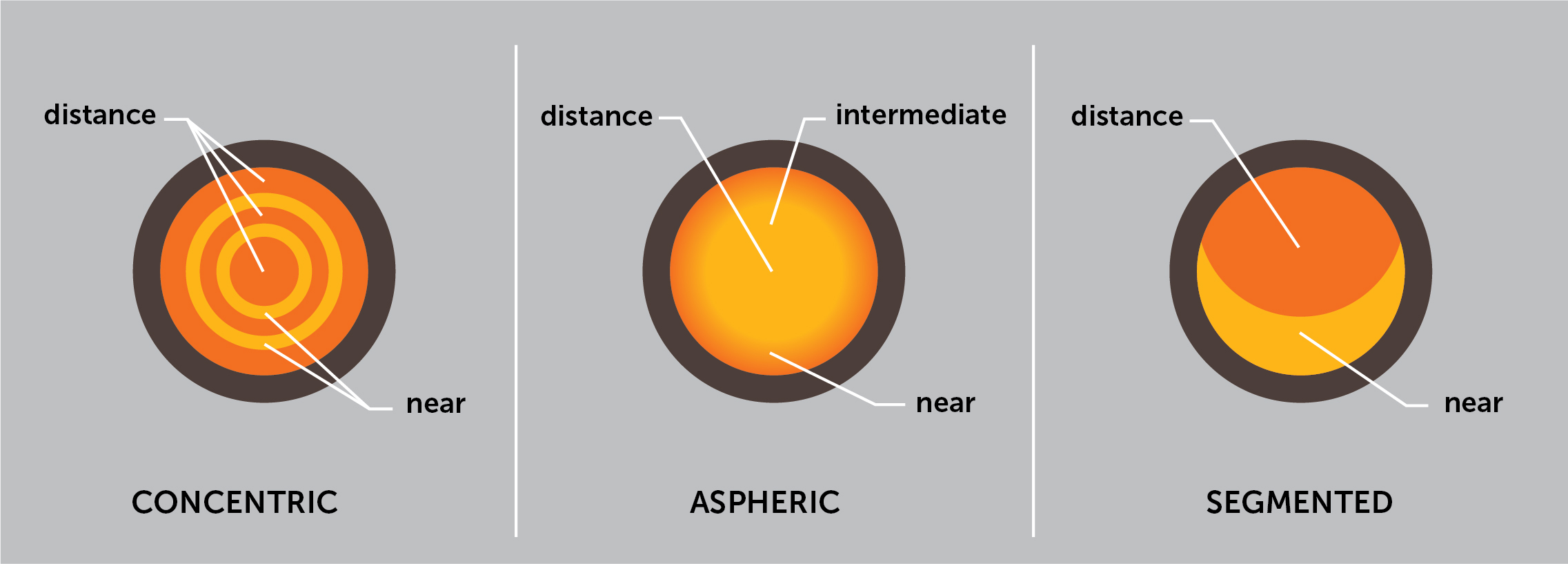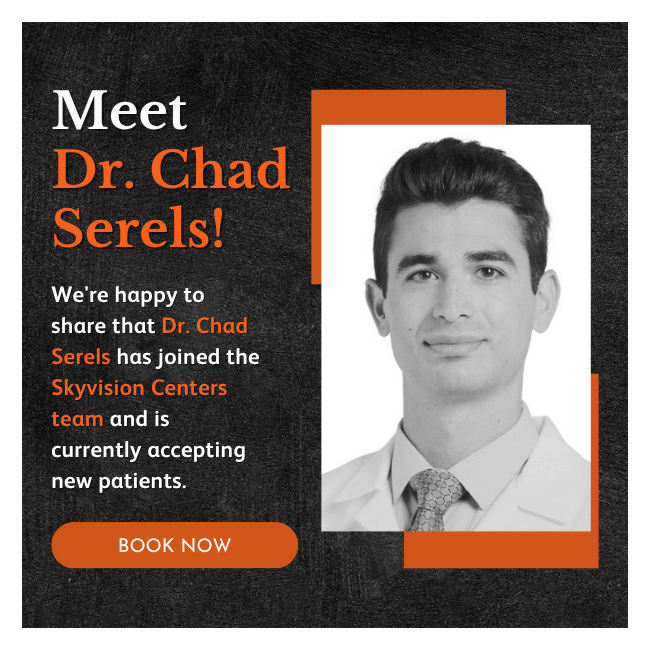Multifocal contact lenses are yet another way to tackle presbyopia, a condition making it difficult to focus on objects up close. Presbyopia, or farsightedness, affects nearly 111 million people in the United States with a large effect on individuals in their mid 40’s. If you suffer from near and farsighted vision, you may have thought glasses were your only option for corrective lenses. Think again! Similar to progressive or bifocal lenses , you can also wear bifocal or multifocal contact lenses to provide a natural transition between your near and distance vision.
What is presbyopia?
Presbyopia, a very common refractive error often referred to as age-related farsightedness, is a gradual, age-related loss in the ability to clearly view up-close objects. If you begin experiencing eye strain after reading or are holding reading materials at an arm’s length away to clearly view, schedule a visit with us to talk about your vision. While there is no way to stop or reverse the effects of presbyopia, factors that can lead to a higher risk of developing presbyopia include age, medical conditions, and drug use. Our practice offers a wide range of eyecare services, and vision correction including frames, lenses, and contact lens options to fit your vision needs and keep you seeing your best.
Why Use Multifocal Contact Lenses?
Multifocal contact lenses create a more natural viewing for the wearer because both eyes are corrected for distance and near vision. There are a variety of options available for multifocal contact lenses that can be worn depending on your preferences and lifestyle. From single and part-time to everyday use, there is a multifocal contact lens option for you.
If you have started experiencing signs of farsightedness and are interested in multifocal contact lenses, schedule your next appointment today to talk with our team. It is much easier to adjust the multifocal lens correction provided on lower prescription needs. If you have a strong prescription and would like to try multifocal contact lenses, contact our office today.
The Pros and Cons
Pros of Multifocal Contact Lenses
- Convenient to use
- Provide a variety of powers in one lens to allow for great vision at all distances
- Offer a smooth transition between different prescriptions without the distinct lines found in bifocal contact lenses
Cons of Multifocal Contact Lenses
- Some wearers find their vision is not perfect at both near and distance, in these situations a compromise is made so one distance vision is better than the other.
- Adjustments are difficult with higher prescriptions
- More difficult to adjust when compared with standard contact lenses
- People who suffer from dry eyes may have more difficulty wearing contact lenses, which may not make the multifocal lenses a good solution to their presbyopia.
Types of Multifocal Contact Lenses
Simultaneous Design
The simultaneous vision design provides a gradual change between near and distance vision. Different zones of the lens are made for near, far, and intermediate vision providing a more natural transition and viewing experience.
Concentric and aspheric lenses are the most common simultaneous vision designs. The concentric design allows for the center of the lens to be the primary viewing zone and the rings around it gradually switch between near and distance vision. Aspheric lenses have a more gradual shift in prescription throughout the lens.
Segmented Design
Segmented contact lenses have a bifocal design. The distance vision is in the upper and central parts of the lens and the near vision is in the lower section of the lens. The two zones are separated by a visible line. When the user looks down the contact lens remains in place due to the flattened bottom edge.

Ready to try out multifocal contact lenses? Give us a call or schedule your next appointment today!



